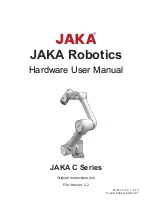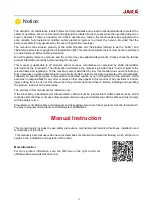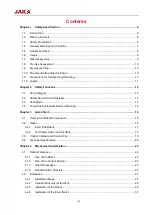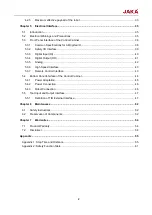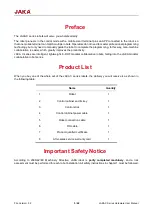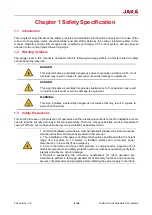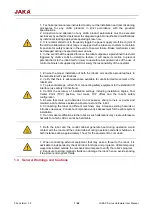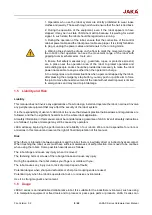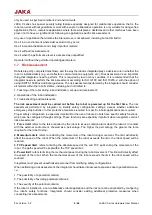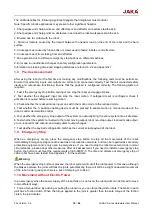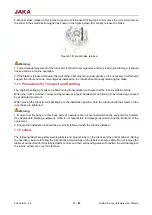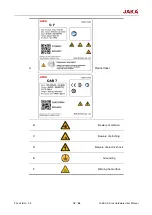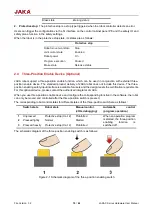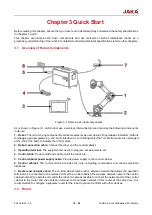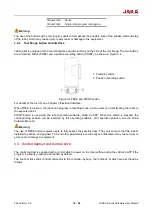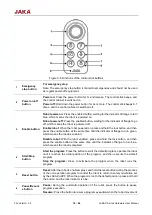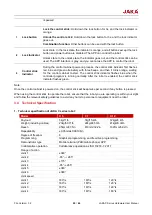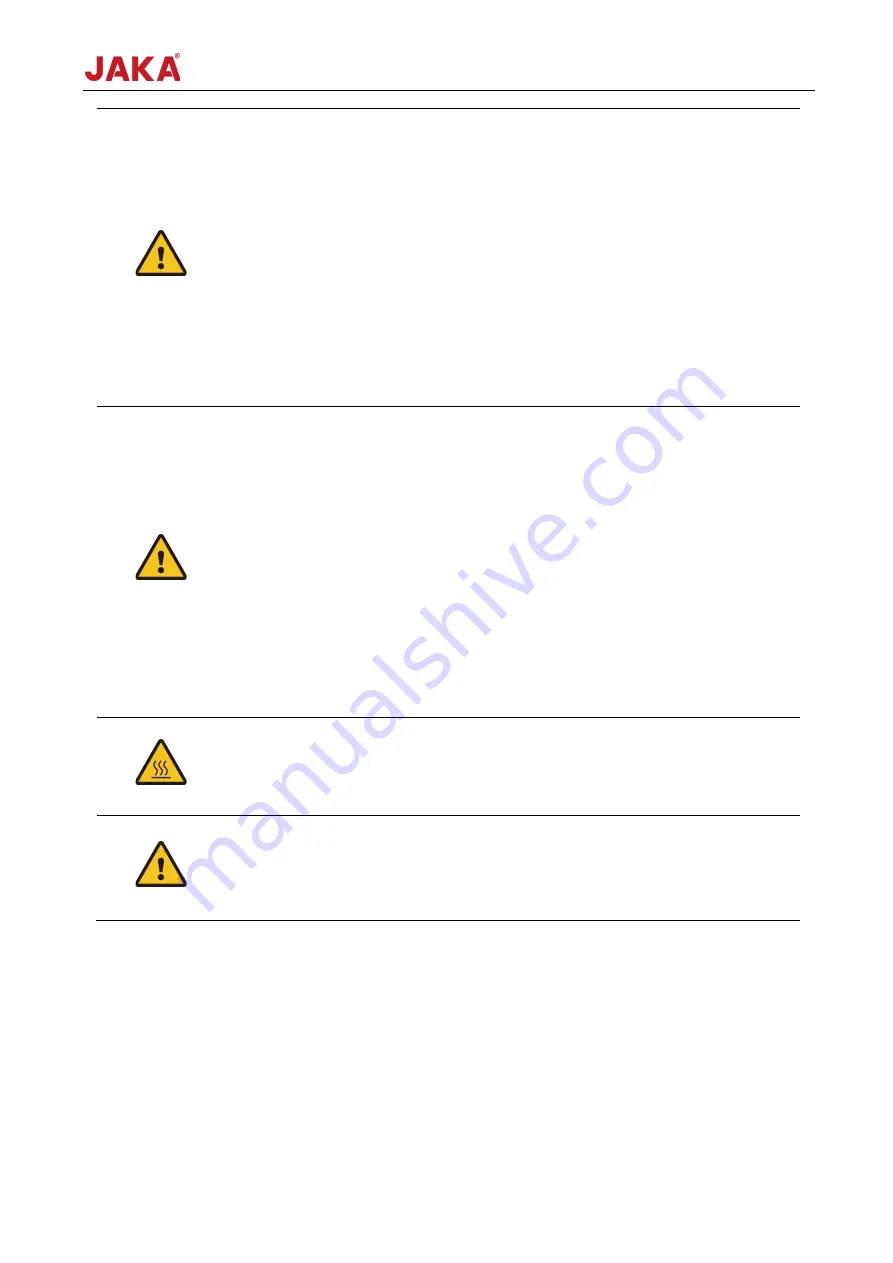
File Version: 3.2
7
/
62
JAKA C Series Hardware User Manual
1. Technical personnel are instructed to carry out the installation and commissioning
procedures for any JAKA products in strict accordance with the provided
specifications.
2. Adjustment and alteration of any JAKA product parameters must be executed
exclusively by authorized personnel to safeguard against unauthorized modifications
by individuals lacking appropriate operating know-how.
3. It is recommended not to frequently toggle the power supply on/off. Each joint of
the JAKA collaborative robot range is equipped with a brake mechanism to maintain
its posture for safety reasons in the event of a power failure. Brake mechanisms can
be damaged during unexpected power downs.
4. In the event that the applied force on the robot surpasses a predefined threshold,
triggered by JAKA’s collision detection feature, it will cease its motion to prevent
potential harm to the robot itself or injury to operators. Associated risks of the use of
control cabinets not supplied by JAKA is solely the responsibility of the operator.
1. Ensure the proper installation of both the robotic arm and its associated tools to
the manufacturer's specifications.
2. Verify that there is adequate space available for unobstructed movement of the
robotic arm.
3. To prevent damage, refrain from connecting safety equipment to the standard I/O
interface (use safety I/O interface).
4. Confirm the accuracy of installation settings, including installation angles, Tool
Center Point (TCP) position, tool mass, TCP offset and the robot's safety
configuration
.
5. Ensure that tools and obstacles do not possess sharp corners or points and
maintain a safe distance between all personnel and the robot.
6. Connecting the robot to different machinery may increase existing hazards or
introduce new ones. Conduct a comprehensive risk assessment for the entire system
installation.
7. Do not make modifications to the robot, as such alterations may create unforeseen
hazards for which JAKA cannot be held liable.
1. Both the robot and the control cabinet generate heat during operation. Avoid
contact with the robot and the control cabinet during operation and after shutdown. In
both instances allow approximately 1 hour for the equipment to cool down.
1. When connecting external equipment that may pose a threat to the robot, it is
advisable to independently check all robot functions and programs. Utilize temporary
waypoints located outside the mechanical workspace to verify the robot's program.
2. Exposure to strong magnetic fields can damage the robot; hence, avoid exposing
it to permanent magnetic fields.
1.4
General Warnings and Cautions

